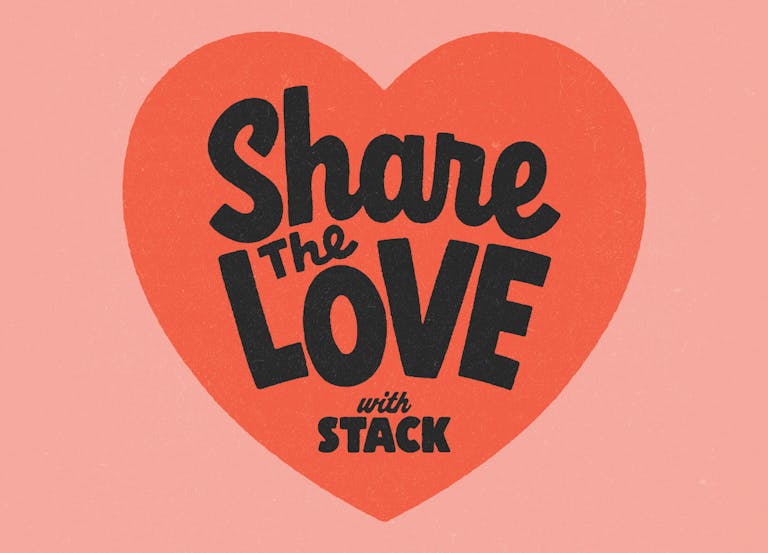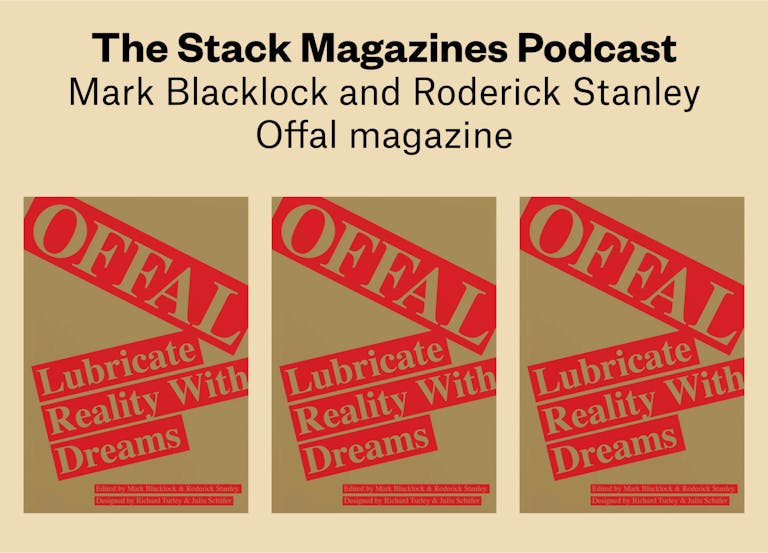Meet Meatpaper

Over in Stack America-land, we sent out our first mailing last week, and what a treat it was. We gave our lovely subscribers a trip to the triple fantastic, each of which I’m now going to detail here on the blog. Don’t forget, we don’t give you advance notice of what’s arriving in your envelope, so as not to spoil the surprise. Subscribe here!
First, we were proud to present the latest edition (hot from the printer) of the truly marvelous Meatpaper. Pretty much everyone (even vegetarians) who spends time with this magazine loves it. It’s a brilliant idea, a visual and literary delight, and it also makes me very hungry. Everything about it says ‘independent, creative media at its finest’. Or sometimes, just ‘moo’.
We caught up with Sasha Wizansky, the magazine’s creative director, to get the lowdown on the fleischgeist.
I know, everyone asks, but we have to as well: Why Meatpaper?
In recent years, more and more eaters are seeking a closer relationship to the meat on their plates. We coined the term “fleischgeist” to describe this new cultural curiosity about meat. Meatpaper exists not to be pro or con, but to document the present, past and future of the complex relationship between humans and the animals they eat or refrain from eating.
Who makes it? What do they do when they’re not Meatpapering?
Meatpaper is published by a small crew of journalists, artists, illustrators, photographers, editors, and food activists. In our other lives some of us are graphic designers, chefs, or editors at other publications. Our main office is in San Francisco, but our contributors are scattered around the globe.
What kind of people buy Meatpaper?
Meatpaper readers have many professions: chefs, butchers, home cooks, artists, and plenty of others that have nothing to do with food or art. What binds together this disparate group is curiosity and open-mindedness. Meatpaper doesn’t just disseminate one point of view, but is committed to documenting the ever-growing fleischgeist from an unbiased perspective. This means that many of the meat photos we publish don’t look delicious. Our readers are meat-eaters and vegetarians who are interested in joining the conversation about the ethics, aesthetics, and cultural significance of meat.
Have you had any unusual reactions to the magazine?
Surprisingly, we’ve had few extreme or unusual reactions to the magazine from readers. Some of our content is a bit graphic, but we don’t print it for shock value. Meat is a complex topic and in order to document it honestly, those images need to be shown. When we were creating the first issue, we had no idea that Meatpaper would become so popular among people in the restaurant and meat industry, that meat companies would purchase ad space, or that the magazine would be sold in butcher shops. It seems that many people are ready to see photos of a slaughterhouse while they are shopping for meat.
Do you worry you’ll ever run out of material?
No. If you consider that every culture in the world has its own particular relationship to meat, you can see that this project could keep us busy indefinitely.
Was there anything you didn’t eat before you started Meatpaper, that you do now? And vice versa?
I was an omnivore before I started the magazine, and I am an omnivore now. I have certainly had the opportunity to taste a variety of organs in the past couple of years that I hadn’t tried before, but since my seven-year stint as a vegetarian ended in my early 20s, I’ve eaten anything. I will say, though, that there are times when I prefer to avoid meat. My Meatpaper life is so saturated by words and images of meat, and events featuring meat, that I rarely prepare meat at home and I frequently eschew meat in favor of my favorite vegetarian recipes and restaurants. I believe that meat should be consumed in very small quantities, both for environmental and health reasons.
Tell us about Meatpaper‘s live events.
Several times a year we throw launch parties that bring together like-minded chefs, food producers, readers, writers, and eaters. The events showcase local culinary talent and local meats and vegetables. It’s our chance to connect with the community that has grown around Meatpaper. We’re very pleased that our parties have inspired some fruitful and delicious culinary collaborations, both in the Bay Area and in Brooklyn.
What are your hopes for the future of Meatpaper?
Meatpaper has recently established a relationship with a nonprofit arts organization that is now acting as our umbrella and fiscal sponsor. In 2010 we’re expanding our educational initiatives and starting a number of projects involving supplemental publications to the quarterly journal, as well as a variety of different kinds of events. We’re excited about all the new projects, but most of all we’re hoping to keep publishing Meatpaper for years to come.
If you could have a plate of any meat in the world in front of you right now, what would you choose?
My answer to this question certainly changes day to day. But today I am dreaming of a pastrami sandwich from the venerable Katz’s Deli on Houston Street in Manhattan. The steaming pastrami is sandwiched by simple rye bread, and there are two perfect quarter-sour pickle spears at its side. And of course, a can of Cel-Ray celery soda.
You can subscribe to Meatpaper by clicking here.






